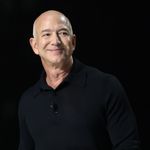
The first three months of 2022 were an interregnum for Twitter: the first quarter purely in the post–Jack Dorsey era, and the only one before Elon Musk came knocking. Thursday morning’s earnings report shows that during this period, Twitter saw a slight surprise increase in users, a little less revenue than forecast, and a roughly flat stock price. It was a familiar place to be for the company. During his brief tenure, Parag Agrawal — the George Lazenby of tech CEOs — did not solve the intractable problems that have made Twitter such a head-scratcher among corporate titans. Even as it has become a little more popular, Twitter has remained limited in its ability to make money.
Quarterly earnings can be more than a window into one company; they can help explain broader societal trends. Take Twitter’s user base. The metric the company uses is monetizable daily active users — basically, the addicts who will probably never leave the site. That number rose to 229 million globally, a 15 percent increase from last year, with most of the growth coming from abroad. With Meta reporting on Wednesday that it had seen some user growth as well, it looks like the exodus of users from big-tech platforms amid the end of the pandemic economy is, at the least, on pause. But most of Twitter’s growth came from overseas, where advertising revenue is paltrier than in the U.S. Given that reality, the board’s sudden, barely contested sale to Musk begins to make more sense.
Part of the problem for Twitter is that making the most possible money off its users has never quite been its raison d’être. Dorsey recently said that the company is really meant to be a “public good at an open protocol level,” and decried the fact that “it has been owned by Wall Street and the ad model.” (A strategic use of the passive voice by a former CEO.) Musk has sounded some similar notes. He has said he doesn’t care about “the economics” of the company and wants to get away from the ad model. But considering that his $270 billion or so fortune is tied up in his car company, and that he’s on the hook to banks like Morgan Stanley for about $25 billion — which is secured by the value of a falling Tesla stock — his sincerity on this issue is an open question.
In that context, what’s important in these quarterly numbers here isn’t that the revenue went up or that it was less than what analysts expected — it was the composition of that revenue. Last year, Twitter made 89 percent of its money from advertising, and under Agrawal, the company became even more reliant on ads to keep things afloat. Subscriptions, under the hardly used Twitter Blue feature, have never been a big part of the business, but revenue from that and data licensing actually decreased 31 percent during the first quarter to $94 million. (Those two business lines are lumped together, so it’s impossible to say how much one makes over the other from this report.) The upshot here is that Agrawal is handing off a company that’s getting larger and more reliant on advertisers just as Musk is vowing to come in and totally remake the 16-year-old company — perhaps through still-hazy plans to push through a subscriber model that’s losing currency by the day.
Would you pay for a Twitter subscription? Maybe some power users would, but this isn’t Raya. As long as Snap, Facebook, and TikTok remain free, there would only be more of an incentive for people to remain on those networks — especially since meme pages just screencap the most viral tweets anyway. The problem Twitter faces — converting readers into paying customers — is similar to the one faced by an industry the company helped lay waste to: newspapers. Maybe Musk can pull it off, but there’s hardly a straightforward solution here.






























